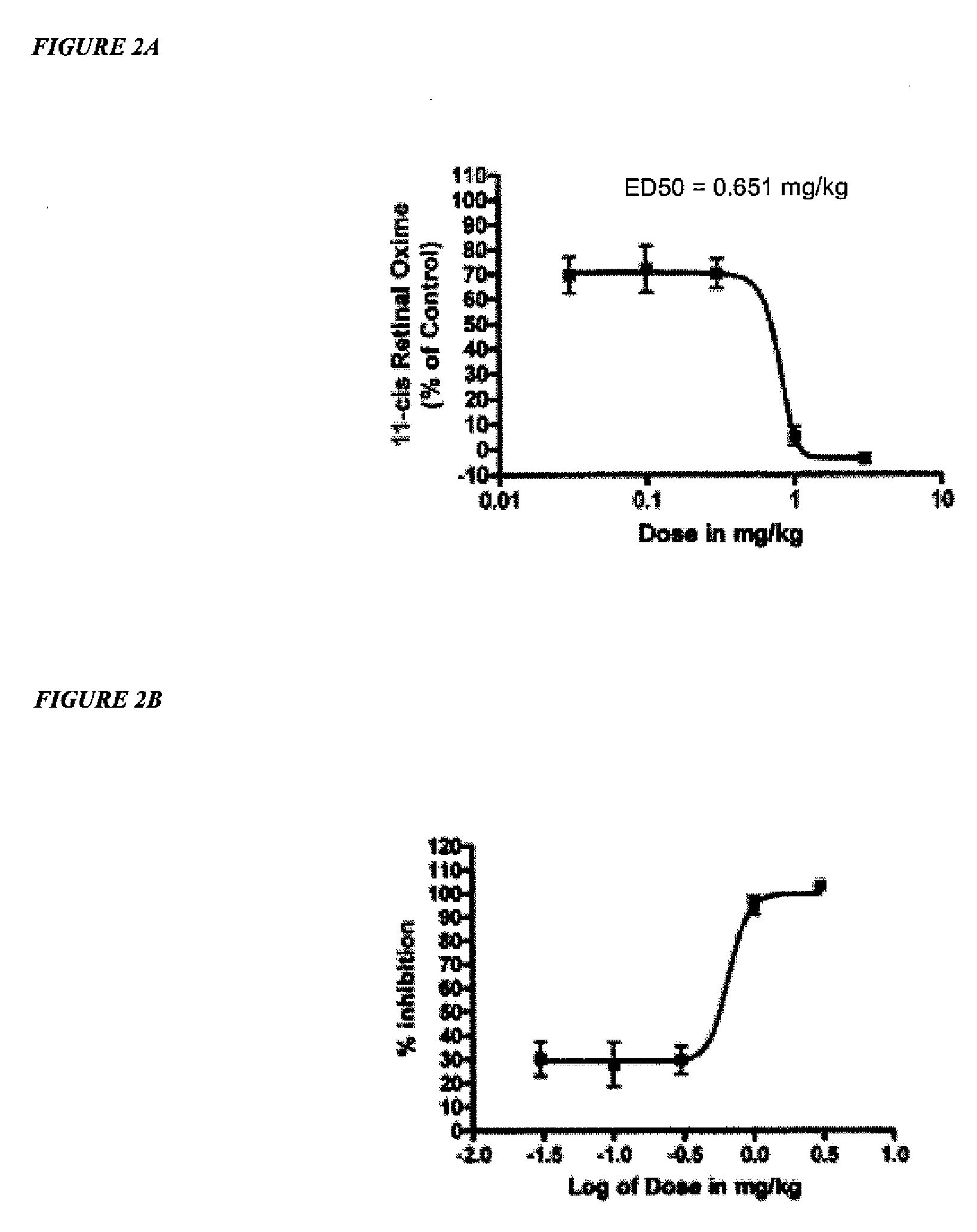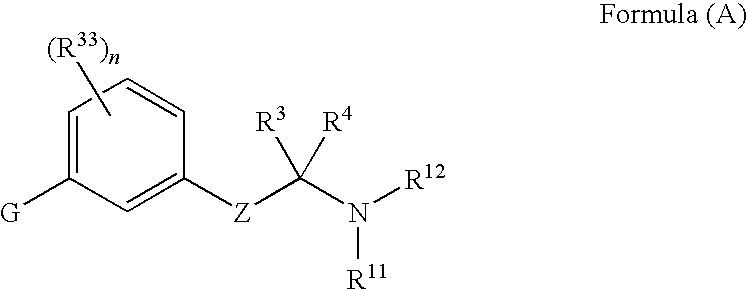Amine Derivative Compounds for Treating Ophthalmic Diseases and Disorders
a technology of ophthalmic diseases and derivative compounds, applied in the field of ophthalmic diseases and disorders, can solve the problems of ineffective treatment, “blind” areas in the central vision, severe damage to the overlying retina, etc., and achieve the effect of effective treatmen
- Summary
- Abstract
- Description
- Claims
- Application Information
AI Technical Summary
Benefits of technology
Problems solved by technology
Method used
Image
Examples
example 1
Preparation of 3-(3-(2,6-Dimethylphenethyl)phenyl)propan-1-amine
[0594]
[0595]3-(3-(2,6-Dimethylphenethyl)phenyl)propan-1-amine was prepared following the method shown in Scheme 1.
[0596]Step 1: To a stirred solution of 2,6-dimethylbenzoic acid (1) (10.0 g, 66.6 mmol) in THF (100 mL) at 0° C. was added borane-TEF complex (80 ml of a 1M solution in THF, 80.0 mmol) dropwise over 20 min and then the reaction mixture was warmed to room temperature. After 64 h the reaction mixture was quenched by slow addition of MeOH (70 mL) and the resulting solution was concentrated under reduced pressure. The residue was suspended in EtOAc (300 mL) and washed with water and brine. The organic layer was dried over Na2SO4 and concentrated under reduced pressure to give alcohol 2 as a white solid. Yield (9.10 g, >99%): 1H NMR (500 MHz, CDCl3) δ 7.03-7.13 (m, 3H), 4.74 (d, J=5.1 Hz, 2H), 2.43 (s, 6H), 1.28 (t, J=5.2 Hz, 1H); ESI MS m / z 119 [M+H−H2O]+.
[0597]Step 2: To a stirred solution of triphenylphosphine...
example 2
Preparation of 1-(3-(3-aminopropyl)phenyl)-3-ethylpentan-3-ol
[0603]
[0604]1-(3-(3-Aminopropyl)phenyl)-3-ethylpentan-3-ol was prepared following the method shown in scheme 2:
[0605]Step 1: To a stirred solution of 3-(3-bromophenyl)propanoic acid (8) (25.0 g, 109.1 mmole) in CH2Cl2(150 ml) was added oxalyl chloride (27.7 g, 218.3 mmol) followed by DMF (2 drops). The solution was stirred at room temperature overnight. The mixture was concentrated under reduced pressure to give the crude acid chloride which was used immediately in the next reaction.
[0606]Step 2: The crude acid chloride was dissolved in anhydrous THF (150 ml) and cooled in an ice bath. Ammonia gas was bubbled into the solution for 3-4 minutes and the mixture was warmed to room temperature and stirred overnight. The mixture was concentrated under reduced pressure and the residue was partitioned between saturated aqueous NaHCO3 and EtOAc. The combined organics were dried over Na2SO4 and concentrated under reduced pressure to...
example 3
Preparation of 4-(3-(3-aminopropyl)phenethyl)heptan-4-ol
[0612]
[0613]4-(3-(3-Aminopropyl)phenethyl)heptan-4-ol was prepared following the method used in Example 2.
[0614]Step 1: To a degassed solution of N-(3-(3-bromophenyl)propyl)-2,2,2-trifluoroacetamide (10) (2.29 g, 7.4 mmol) and 4-ethynylheptan-4-ol (2.4 g, 18.5 mmol) in triethylamine (2 mL) and DMF (18 mL) was added PdCl2(PPh3)2 (0.130 g, 0.185 mmol), P(o-Tol)3 (0.113 g, 0.37 mmol), and CuI (0.070 g, 0.37 mmol). The resulting mixture was degassed and stirred under argon at 90° C. overnight. The mixture was cooled to room temperature and the solids were removed by filtration through Celite. The filtrate was partitioned between diethyl ether and water and the combined organics were washed with brine, dried over Na2SO4 and concentrated under reduced pressure. Purification by flash chromatography (6 to 50% EtOAc-hexanes gradient) gave N-(3-(3-(3-ethyl-3-hydroxypentyl)phenyl)propyl)-2,2,2-trifluoroacetamide (12) as an amber oil. Yiel...
PUM
| Property | Measurement | Unit |
|---|---|---|
| Time | aaaaa | aaaaa |
| Time | aaaaa | aaaaa |
| Temperature | aaaaa | aaaaa |
Abstract
Description
Claims
Application Information
 Login to View More
Login to View More - R&D
- Intellectual Property
- Life Sciences
- Materials
- Tech Scout
- Unparalleled Data Quality
- Higher Quality Content
- 60% Fewer Hallucinations
Browse by: Latest US Patents, China's latest patents, Technical Efficacy Thesaurus, Application Domain, Technology Topic, Popular Technical Reports.
© 2025 PatSnap. All rights reserved.Legal|Privacy policy|Modern Slavery Act Transparency Statement|Sitemap|About US| Contact US: help@patsnap.com



